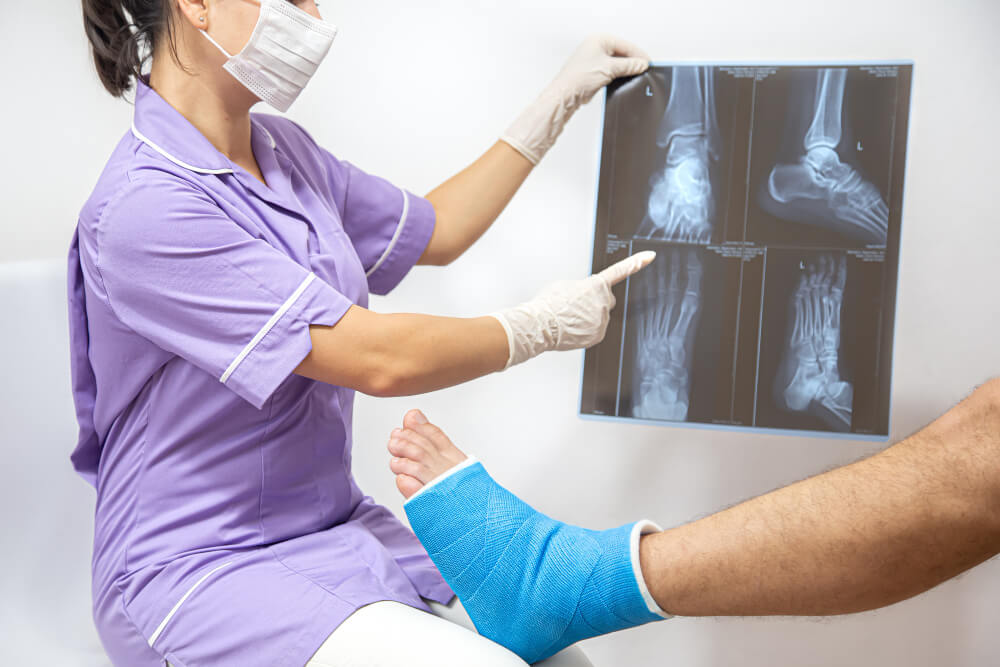Game On! Sports Medicine vs. Fractures: Your Winning Comeback Guide
The crack. The searing pain. The crushing realization that your season might be over before it truly began. A sports fracture throws a wrench in your game, shattering bones and dreams in equal measure. But hold on, athlete! Before you succumb to the Bone Break Blues, let’s rewrite your story. This guide is your playbook, a game plan for a winning comeback – armed with sports medicine expertise and unwavering grit.
Know Your Break:
Not all fractures are created equal. While a cracked finger might heal with some TLC, a shattered ankle demands immediate attention. This guide equips you to decode the common culprits of the sports fracture world:
- Stress fractures: The silent assassins, often caused by repetitive stress and overuse. Listen to your body’s whispers – aching shins, tender wrists, persistent pain – and consult a doctor before the crack becomes a roar.
- Avulsion fractures: These happen when a ligament or tendon yanks a piece of bone off its resting place. Think sudden twists, violent stops, and excruciating pops. Don’t ignore these alarm bells – seek urgent care for proper diagnosis and management.
- Displaced fractures: The bone breaks and loses its normal alignment. Swelling, deformity, and intense pain are your red flags. This is no time for DIY healing – get to the emergency room or urgent care right away.
Urgent Care vs. Couch:
A cracked bone isn’t a badge of honor; it’s a call to action. But when do you rush to urgent care and when can you take refuge on the couch? Here’s the breakdown:
- Seek immediate attention if:
- You experience intense pain, swelling, or deformity.
- The bone is visibly out of place.
- You can’t bear weight on the injured limb.
- You suspect nerve or blood vessel damage.
- Rest and rehabilitation at home may be appropriate for:
- Minor fractures confirmed by a doctor.
- Fractures with minimal displacement and manageable pain.
- Cases where you have access to proper medical monitoring and support.
Remember: Always err on the side of caution. When in doubt, consult a doctor or visit urgent care. A timely diagnosis and proper management can drastically reduce healing time and prevent complications.
Sports Medicine: Your Secret Weapon:
Think of sports medicine as your secret weapon against fractures. These specialized professionals understand the unique demands of athletic bodies and have the expertise to tailor a recovery plan that gets you back in the game, stronger than ever. Here’s why they’re your ace in the hole:
- Faster diagnosis and treatment: Sports medicine professionals are familiar with the nuances of sports injuries and can quickly diagnose your fracture, ensuring you receive the right treatment from the get-go.
- Specialized rehab programs: Forget generic therapy routines. Sports medicine experts design rehabilitation programs based on your specific sport, injury, and fitness level, maximizing your recovery potential.
- Nutritional guidance: Proper nutrition is vital for bone healing. Sports medicine professionals can help you fuel your body with the right nutrients to accelerate recovery and prevent future injuries.
- Mental resilience coaching: A fracture can be emotionally draining. Sports medicine professionals understand the mental challenges of injury and can provide support and guidance to help you stay positive and motivated throughout your journey.
Game Changers: Recovery Strategies for a Winning Return:
Your comeback story isn’t just about mending bone. It’s about rebuilding your body and mind, stronger than before. Here are some game-changing strategies to guide you:
- From Diagnosis to Treatment:
- Casting and bracing: Your temporary armor. Follow your doctor’s instructions on wearing and caring for your cast or brace to ensure proper healing.
- Pain management: Don’t suffer in silence! Manage pain through medication, physical therapy modalities like ice or heat, and alternative therapies like acupuncture or massage.
- Surgery: In some cases, surgery may be necessary to realign or fix the bone. Trust your doctor’s recommendation and follow post-operative instructions diligently.
- Beyond the Bone:
- Nourish for Strength: Fuel your body with bone-building nutrients like calcium, Vitamin D, and protein. Don’t forget the healing power of fruits, vegetables, and whole grains.
- Hydration is Key: Water is essential for cell function and healing. Stay adequately hydrated to support your body’s repair mechanisms.
- Mental Toughness: A fracture can be mentally challenging. Practice resilience techniques like meditation, positive self-talk, and visualization to stay motivated and focused on your comeback.
- Training for Tomorrow:
- Safe and Effective Exercises: Once cleared by your doctor, reintroduce exercise gradually. Your sports medicine therapist will design a safe and effective program to regain strength


